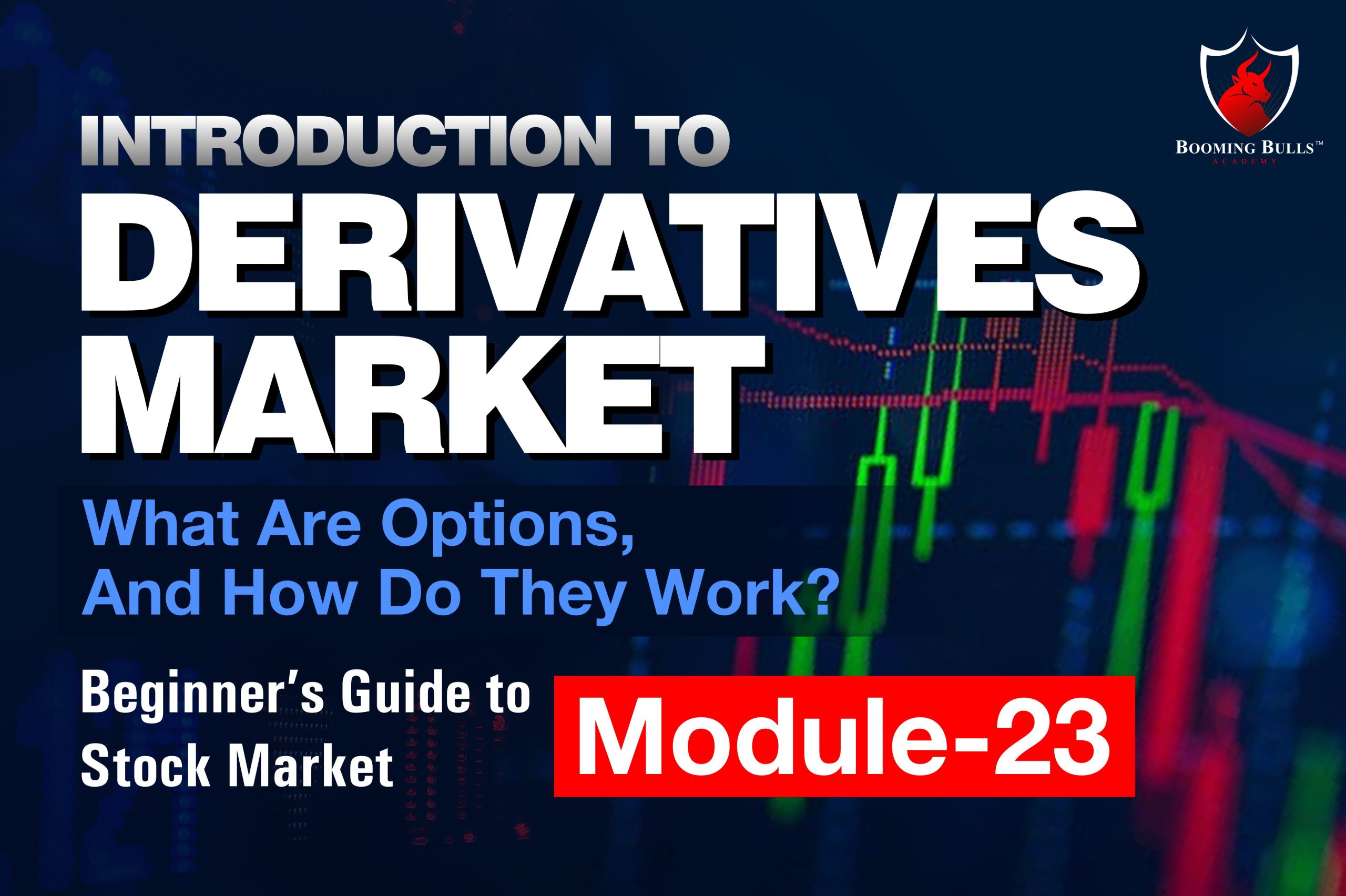

What are Options? This is probably the most asked question to me. In the previous blog of this series, we have covered what futures are and how they work. Now, we will discuss the most famous topic of derivatives, which is ‘Options’. Options are probably the best instrument to trade because, with the help of options, you can create a different view on markets simultaneously.
For example, you can go long, and at the same time, you can go short for the same underlying asset. You can’t do this in the future and in the equity market, and hence I feel that they limit our profit probabilities.
So, without any delay, let’s get to the topic.
Before answering the question of What are Options, it is important to know that the options are part of the Derivative Market; the value of options is derived from the other underlying securities, such as stocks. There are two types of options –
1) Call Options.
2) Put Options.
As in stocks, two parties are involved; one is a buyer, and the other is a seller. In the same way, there are two participants, those who buy the options are referred to as Options Buyers, and those who sell options are called Options Sellers/Option Writers.
1) Call Options – Call Options are nothing but a legal contract that gives the buyer a right but not an obligation to buy a particular asset at a particular price on a particular date (referred to as the expiry date)
If you are bullish on a particular underlying asset and think that it can go up until expiry, you can think of buying a Call Option. For buying a specific call option buyer pays a particular premium to the Option Seller.
That premium consists of various factors such as Theta, Alpha, Gamma, vega etc. Another term you should understand here is ‘strike price.’
The strike price is the price at which a particular option can be exercised. The closer the stock price of your option from the spot, the more premium you have to pay for buying that option.
2) Put Options – Put Options are nothing but a legal contract that gives the buyer a right but not an obligation to sell a particular asset at a predetermined price on a particular date.
You can buy a put option when you have a bearish view on a particular asset. Like the call option, for buying a put option, the buyer pays a particular premium to the option seller. As the price of the underlying assets decreases, the prices of the put options increase.
It is important to know What are ITM, OTM & ATM options before doing options trading.
1) ITM Options – ITM stands for In The Money Option. For the call option, ITM means the underlying price is greater than the strike price & for the put option, the ITM option means the underlying price is less than the strike price.
For example, Suppose nifty is at 17000; then, in this case, the 16900 Call Option will be in the money Call Option, whereas the 17100 Put Option will be in the money Put Option. As an option buyer, you should always trade in the money options because there is a high probability of profit compared to Out of money or At money options.
2) OTM Options– OTM stands for Out of The Money. For the call option, OTM means the underlying price is less than the option’s strike price, and for the Put option, the OTM option will be the one whose strike price is less than the underlying price.
For example, (Considering the previous example) Suppose nifty is at 17000, the 17100 CE will be out of the money call option, whereas 16900 put option will be Out of the money put option. All the out of the money options go to 0 on the expiry day.
3) ATM Options – ATM stands for At The Money. If the underlying price is equal to the strike price, then, in that case, we can say that it is an ATM option.
For example, If nifty is at 17000, then 17000 CE & 17000 PE will be called At The Money Options. Similar to OTM options, these options will also go to zero if the underlying asset expires at the exact price equal to that particular strike price.
This was a brief explanation of the fundamentals of the options. I am sure that this article will help you understand what options are and how they work. If you have any doubts, please post them in the comment section.
Also, if you like this article, don’t forget to share us across your social media handles.
If you want to know more about Risk Management & Intraday Trading Strategies you can refer to our previous blog on
Importance Of Risk Management In Trading and 10 Best Intraday Trading Strategies.
Open a Demat Account using our link to get support from us – https://bit.ly/3gyhIWN and send your ID to [email protected]
Happy Learning!
Thank you Anish Sir ❤️❤️❤️
Glad that you find the blog helpful; we constantly try to bring helpful blogs for our traders and will continue doing so.